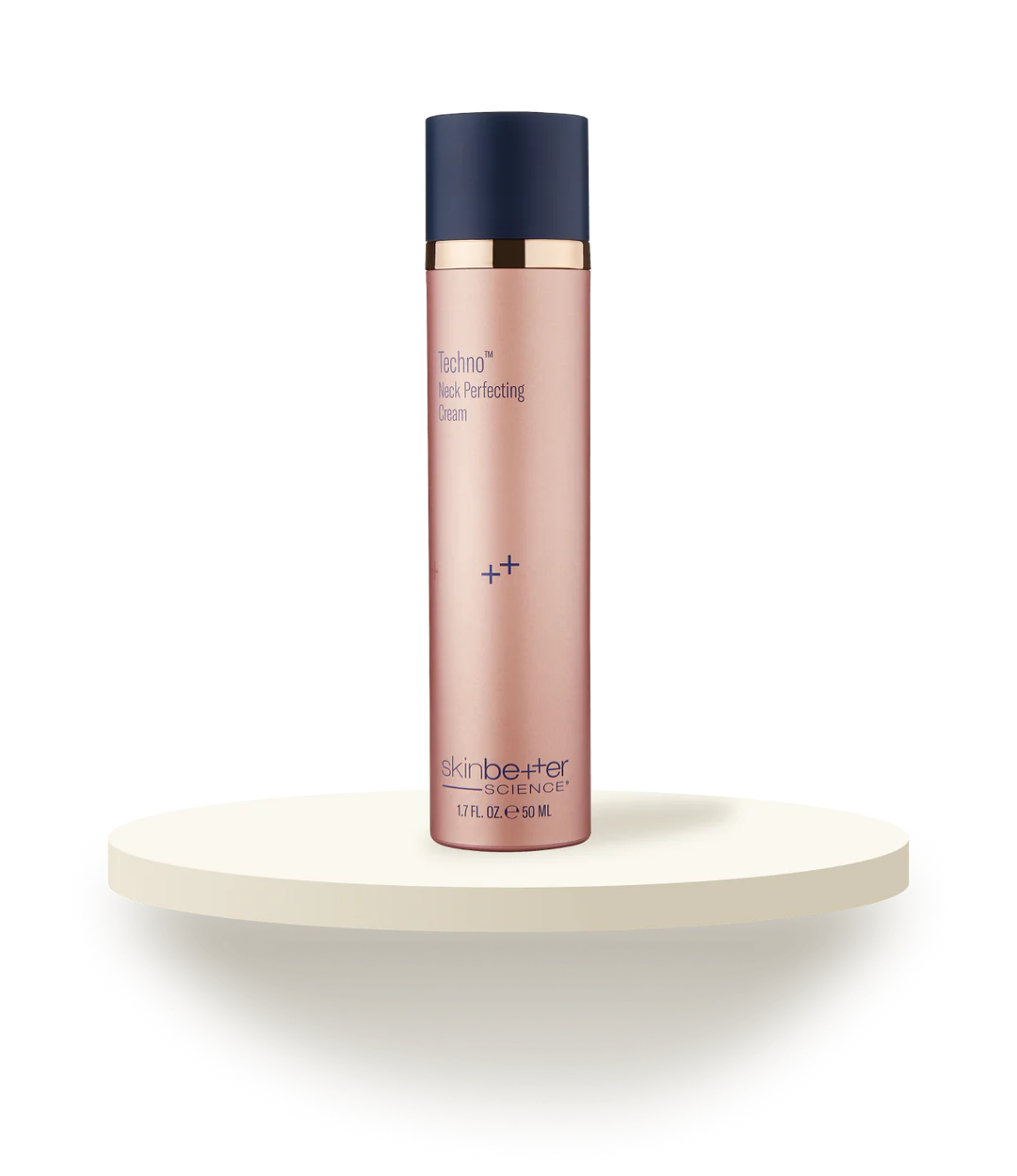Causes of Jowls
Age is the primary cause of jowls. Nearly all people develop jowls as they age. However, several factors can cause jowls to develop faster, even in young people. Some examples are poor diet, sedentary lifestyle, certain repetitive facial habits, and rapid weight loss.
With age, the skin typically loses and fails to replenish its stores of collagen and elastin which are both important for maintaining flexibility and elasticity. Collagen is the body’s primary connective protein. It keeps the skin connected to other tissues and thereby prevents sagging and drooping.
When the diet chronically lacks proper nutrients, all of its organs, glands, and systems suffer, including the skin. As people age, many experience skin tissue volume loss and less skin resilience. The lack of connective tissue works with gravity to cause the face and neck skin to shift downward. When this occurs under the cheeks and jawline, jowls are formed.
Sun exposure is another factor associated with jowl likelihood and severity. Avoiding intense sunlight and wearing a quality sunblock might help to reduce jowls in some people. However, there have been no large human studies that support this assertion.
Other factors that might increase jowl likelihood include:
Chronic dehydration
Chronic use of alcohol
Smoking tobacco products
Chronic lack of physical exercise
Diets that lack antioxidants and healthy fats
Lifestyle habits that overuse the face muscles
Poor personal hygiene that damages skin health
Overgrooming the skin, chronic sickness, physical trauma, and family history may also increase the chances for or severity of jowls.
Treating Jowls: From Fillers to Facial Surgery
Jowls are harmless in most cases and do not need to be medically corrected. However, they can cause cosmetic issues, anxiety, low self-confidence, and other problems in some people.
Note that jowl correction procedures are generally not covered by insurance plans as they are elective in most cases. Some common treatment options are:
Facelift Surgery
A facelift (rhytidectomy) or neck lift surgery (lower rhytidectomy) may be used to correct loose, sagging skin under the lower face, chin, and jawline. A skilled plastic surgeon will need to evaluate each patient to determine any unique needs, and then, recommend a treatment procedure accordingly.
Injectable Dermal Fillers
Dermal fillers are used to erase the appearance of nasolabial folds (smile lines), marionette lines, and jowls to some degree. However, dermal filler injections do not produce permanent results and they are not effective for severe cases of these cosmetic challenges.
Some of the most common dermal fillers are made with substances like hyaluronic acid, poly-l-lactic acid, polymethyl methacrylate, calcium hydroxylapatite, and silicone. Small amounts are injected into areas where fat loss has occurred that make the jowls appear more prominent.
Some of the most popular dermal fillers are:
Juvederm®
Voluma®
Restylane®
Perlane®
Radiesse®
Sculptra®
These fillers can also plump out the skin in the lower jaws, lower cheeks, and where deep wrinkles are to enhance overall facial harmony and create a more youthful look. Results typically last between 2-4 years but various patient-specific factors dictate the actual duration.
Non-Surgical Facial Tightening
Minimally invasive procedures for treating loose jowls and other cosmetic concerns are becoming more demanded. Some safe and popular jowl treatment options available today are:
Infrared Skin Tightening
Thermage
Ultherapy
Infrared Skin Tightening
Laser skin tightening is a minimally invasive method that has been approved by the FDA for treating skin laxity, wrinkles, and fine lines. It is not as intense or as effective as surgical procedures like a facelift, but it does produce very appreciable results in many patients.
During the procedure, a laser is used to direct high-intensity light rays at the jowl areas. The light becomes heat energy beneath the skin which stimulates collagen production and subsequently tightens the skin. This safe facial rejuvenation procedure produces a more youthful appearance and causes very little downtime.
Thermage
Thermage FLX™ is a patented technology that uses precise radio frequencies to penetrate the deeper layers of the skin and stimulate collagen production. Like infrared laser therapy, this technique also uses heat energy to increase collagen and tighten the skin.
Most patients notice smoother skin after one treatment but more dramatic results typically require multiple treatments. Skin tightening results continue to improve with time. However, this technique may not be effective for those with severe jowl issues. For those, a more intense technique may be needed.
Ultherapy
Ultherapy is a unique FDA-approved procedure for lifting loose skin on the neck, brow, and under the chin. It uses ultrasonic frequencies to target problem areas from the forehead to the chest. Some clinical research supports this therapy, with more than one million procedures performed and very few side effects reported.
According to the company website, “Ultherapy relies on ultrasound therapy to deliver its collagen-boosting treatment. It also incorporates traditional ultrasound imaging, which allows practitioners to see the layers of tissue they are treating, ensuring the treatment energy is delivered to where it will be most beneficial."
Jowls Prevention
It is not possible to completely prevent jowls from developing with age, but proper diet, skin care, and facial muscle exercises might help to reduce their severity and thereby avoid having to get a jowl surgery.
Skincare
The skin is the body’s largest organ and it needs proper nutrition to keep it operating efficiently. Some of the nutrients known to help develop and maintain dermatological health are:
Some of the best foods to eat to develop and maintain the health and elasticity of your skin include fatty fish, avocado, walnuts, sunflower seeds, broccoli, tomatoes, sweet potatoes, green tea, and red wine.
Taking a gelatin or collagen supplement may also help to keep connective tissue proteins at adequate levels, especially in those over 50 years of age. Further, drinking plenty of fresh, purified water every day is very important for maintaining subtle, resilient skin.
Facial Exercises
Noninvasive techniques for reducing the appearance of jowls and maintaining a crisp jawline including acupuncture, facial muscle yoga, and other forms of facial exercise are popular today. As with other muscles in the body, the facial muscles can be worked and toned so that they maintain their shape and function better with age.
Following are some examples of face exercises that might help to tighten loose skin and excess fat in the lower jaw.
Stretching the mouth wide open and closing it slowly without touching the teeth together
Inflating the cheeks with air and holding them there for 15 seconds
Pressing the tongue against the roof of the mouth and humming
Placing the lower lip on top of the upper lip and tilting head up
Repeating vowel sounds with the mouth wide open
Tilting the head up and down while grinning widely
Slightly tilting the head up while chewing
These and similar facial exercises are commonly recommended to be performed for 10-20 seconds at a time, for up to 12 times a day.
Exercises for the face may help to tone the muscles but typically do little to reduce jowls since poor muscle tone does not cause jowls. Loss of elastin, collagen, and fat stores in the face and lower jaw region are the reasons jowls develop.


